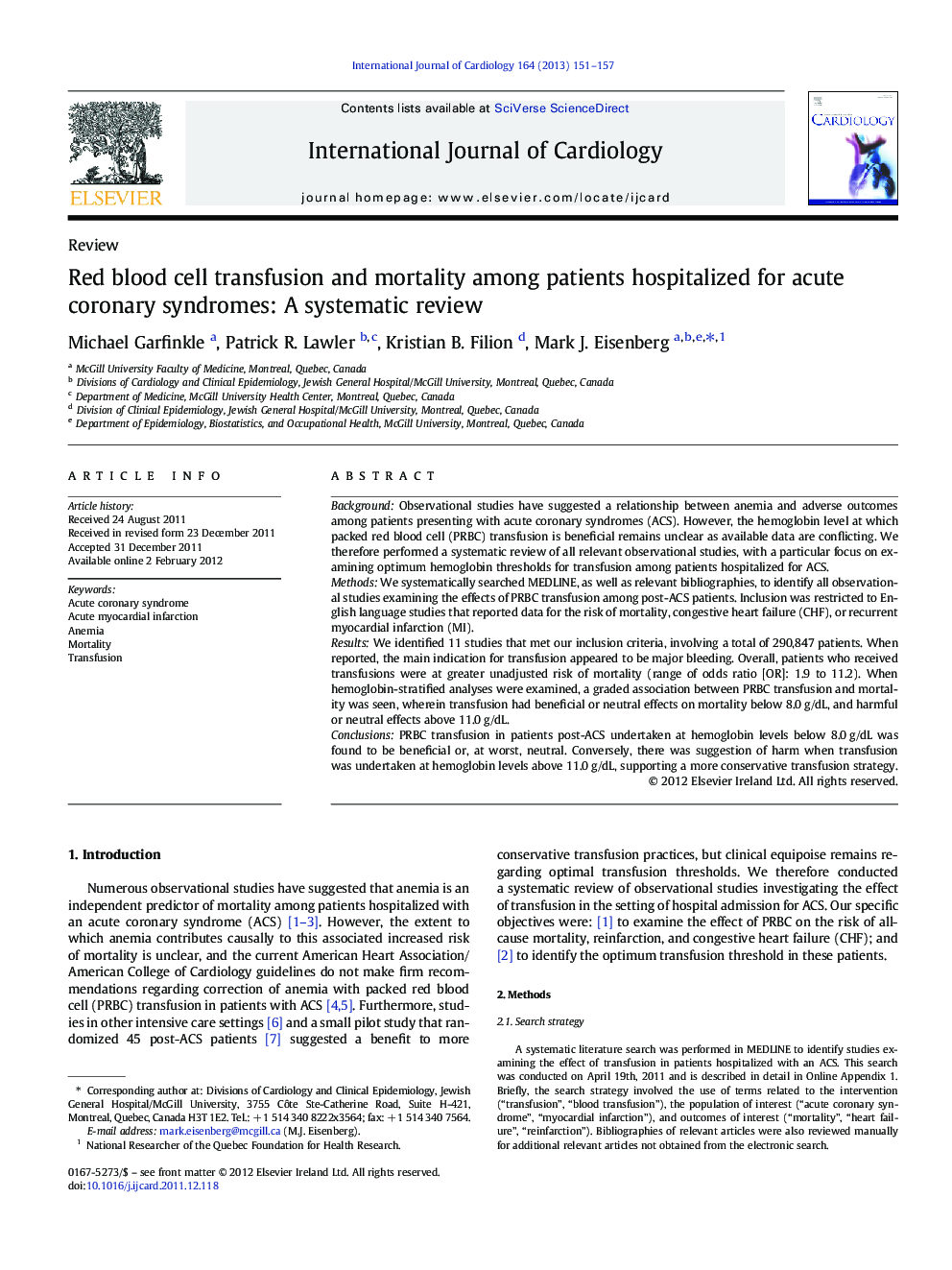| Article ID | Journal | Published Year | Pages | File Type |
|---|---|---|---|---|
| 5977624 | International Journal of Cardiology | 2013 | 7 Pages |
BackgroundObservational studies have suggested a relationship between anemia and adverse outcomes among patients presenting with acute coronary syndromes (ACS). However, the hemoglobin level at which packed red blood cell (PRBC) transfusion is beneficial remains unclear as available data are conflicting. We therefore performed a systematic review of all relevant observational studies, with a particular focus on examining optimum hemoglobin thresholds for transfusion among patients hospitalized for ACS.MethodsWe systematically searched MEDLINE, as well as relevant bibliographies, to identify all observational studies examining the effects of PRBC transfusion among post-ACS patients. Inclusion was restricted to English language studies that reported data for the risk of mortality, congestive heart failure (CHF), or recurrent myocardial infarction (MI).ResultsWe identified 11 studies that met our inclusion criteria, involving a total of 290,847 patients. When reported, the main indication for transfusion appeared to be major bleeding. Overall, patients who received transfusions were at greater unadjusted risk of mortality (range of odds ratio [OR]: 1.9 to 11.2). When hemoglobin-stratified analyses were examined, a graded association between PRBC transfusion and mortality was seen, wherein transfusion had beneficial or neutral effects on mortality below 8.0Â g/dL, and harmful or neutral effects above 11.0Â g/dL.ConclusionsPRBC transfusion in patients post-ACS undertaken at hemoglobin levels below 8.0Â g/dL was found to be beneficial or, at worst, neutral. Conversely, there was suggestion of harm when transfusion was undertaken at hemoglobin levels above 11.0Â g/dL, supporting a more conservative transfusion strategy.
